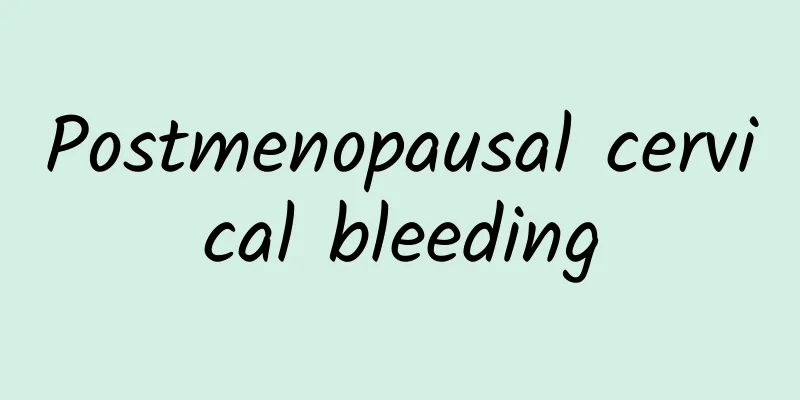Postmenopausal cervical bleeding

|
Postmenopausal cervical bleeding may be caused by a variety of reasons, including cervicitis, cervical polyps, local injuries, and even malignant lesions. You should seek medical attention for detailed examinations in a timely manner to identify the cause and take targeted treatment. Common treatments include medication, local surgery, and adjustments to sexual life and daily lifestyle. 1. Cervicitis or infection problems Due to the decline in estrogen levels in postmenopausal women, vaginal and cervical secretions decrease, resulting in weakened local barrier function, making them more susceptible to infection, which may cause cervicitis or local erosion, and slight bleeding. Treatment usually includes the use of antibiotics or antibacterial drugs such as metronidazole suppositories and levofloxacin tablets, while strengthening local cleaning and avoiding the use of irritating cleaning products. Under the guidance of a doctor, local estrogen medications such as vaginal estrogen cream can be used to increase local defense capabilities. 2. Cervical polyps or hyperplastic lesions Cervical polyps are one of the common pathological changes in postmenopausal women. Small polyps may bleed due to friction or infection, which can usually be removed through a simple outpatient surgery. If polyps recur or are accompanied by other abnormalities, pathological examination is required to rule out the possibility of precancerous lesions. 3. Local mechanical injury After menopause, the vaginal wall becomes thinner and more fragile. Sexual intercourse or gynecological examinations may cause minor injuries, leading to cervical bleeding spots. This type of bleeding can be restored by reducing stimulation and applying disinfectants. It is recommended to use lubricants under the guidance of a doctor to improve the quality of sexual life and reduce the risk of local injuries. 4. Possibility of malignant lesions Although the probability is low, postmenopausal cervical bleeding spots may also be an early sign of cervical cancer. In particular, persistent or large-area bleeding spots should rule out the possibility of cervical malignancy. Doctors usually recommend cervical cytology (TCT), human papillomavirus (HPV) screening, and further cervical biopsy if necessary. Cervical bleeding after menopause should not be ignored. It is recommended to see a doctor as soon as possible and be evaluated by a professional doctor. After the cause is determined through examination, targeted treatment can not only solve the problem, but also avoid potential health risks. |
<<: Is it useful to take soy isoflavones for irregular menstruation?
>>: What does cervical hypertrophy mean?
Recommend
What causes ovarian cysts?
Ovarian cysts are actually a type of gynecologica...
Causes and manifestations of endometrial tuberculosis
We must actively grasp the cause of endometrial t...
What are the symptoms of intrauterine adhesions?
Intrauterine adhesions may cause symptoms such as...
What are the symptoms of chronic pelvic inflammatory disease?
Chronic pelvic inflammatory disease is a common d...
What is the best treatment for Bartholinitis?
Bartholinitis is a common disease among women. In...
What are the dangers of threatened abortion?
What are the harmful manifestations of threatened...
Can patients with bacterial vaginosis have sexual intercourse? How is bacterial vaginosis transmitted?
The appearance of bacterial vaginosis makes many ...
What are the causes of bacterial vaginosis?
In recent years, the incidence of bacterial vagin...
Things women with irregular menstruation should pay attention to
Many patients are very clear about the precaution...
Several typical symptoms of irregular menstruation
In real life, the symptoms of irregular menstruat...
Pyramid exercise method! Burn 100 calories in 10 minutes
Pyramid exercise means adding one exercise at a t...
What are the symptoms of menopause?
Menopause is a common gynecological disease. Expe...
Small details in daily life can help you regulate irregular menstruation
Normal women's menstruation is regular. Once ...
Can Chinese medicine treat amenorrhea?
Traditional Chinese medicine can regulate amenorr...
How much does an ectopic pregnancy abortion cost?
How much does an abortion for an ectopic pregnanc...









